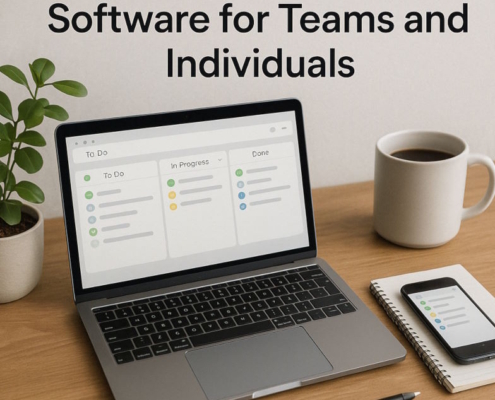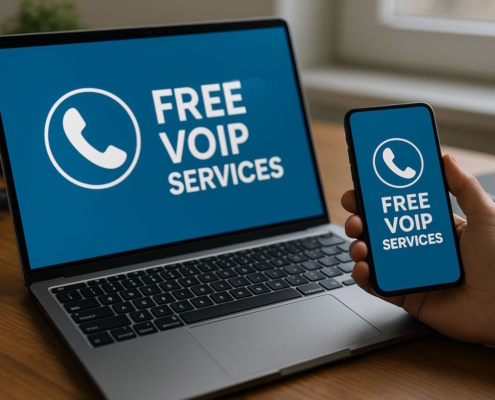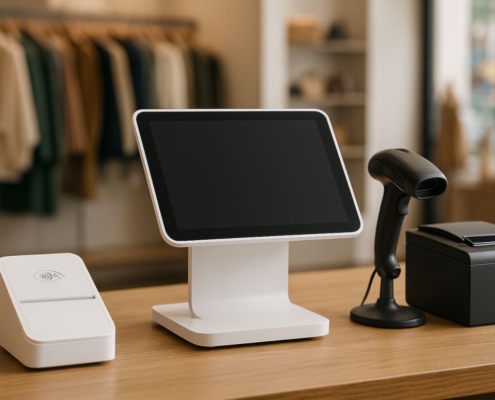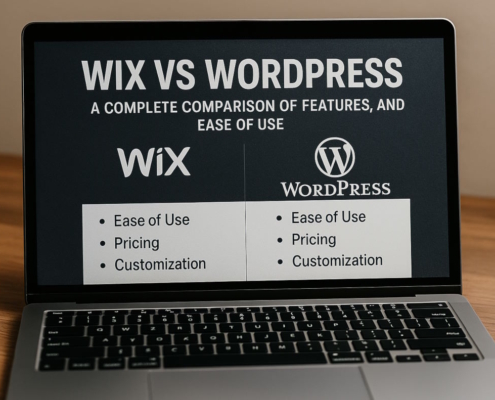Introduction
Businesses across all industries can manage and combine critical business operations and procedures into a single system with the use of ERP (enterprise resource planning) technologies. Accounting, supply chain management, human resources (HR), and CRM (customer relationship management) are a few examples of features that streamline productivity, cut down on inefficiencies, and simplify workflows. The top ERP systems available today have been identified and ranked by us to assist you in selecting the best option for your company.
The top ERP Systems for 2024
- The best all-around is Microsoft Dynamics 365 Business Central.
- Syspro: Optimal for distribution firms
- QT9: Ideal for businesses in the life sciences
- Acumatica: Ideal for solutions based on roles
- The best ERP for manufacturers is Katana Manufacturing ERP.
- Nonprofits benefit most from the Mountain Cougar Denali Summit
- AccountMate: The greatest tool for handling finances
Reasons to Trust Us
Our staff is dedicated to providing you with completely independent editorial control and objective rankings and information. To help you make the best choices for your company’s journey, we leverage expert insights, strategic methodology, and product data to support all of our material.
After conducting a thorough analysis of the leading firms in the market, we selected and ranked the top 16 using 25 important parameters. We take into account a number of variables when reviewing products, including clear pricing, employee independence, third-party integration compatibility, customer service accessibility, and ratings. Our editorial staff is the only ones who assign ratings.
1. Microsoft Dynamics 365 Business Central
Starting price: Seventy dollars a month for each user
Free trial: for thirty days
Standout features: Tracking customer returns and repairs, allocating work orders, and predicting supply replenishment
Editor’s Viewpoint
Robust ERP software like Microsoft Dynamics 365 Business Central assists small organizations in streamlining their operations, finance, sales, and service departments to produce better, faster outcomes. It can be used to assign workers to specific work orders, register sent goods, automatically save information in one location, and transfer items across locations with ease.
The capacity to forecast stock replenishment and efficiently fulfill client orders using real-time data are two other notable capabilities. Additionally, the mobile app is ideal for managing your business while on the road. It is one of the top 5 best enterprise resource software.
Who should make use of it?
The addition of Microsoft Dynamics 365 Business Central could prove beneficial if your company already uses and is accustomed to Microsoft Office.
Pros
- Real-time indicators of performance to support your decision-making.
- Possibility of integrating the system with Microsoft Office products to enhance user experiences for both staff and clients, including Outlook & Excel.
- Monitoring client agreements to control costs, rebates, delivery schedules, and other aspects
Cons
- Sometimes a little slow
- Has a learning path.
- Reports could be hard to read and comprehend.
2. Syspro
Starting price: Contact to know pricing
Free trial: No
Standout features: Charge-back administration, goods-in-transit tracking, and sales analysis
Editor’s Viewpoint
For distribution businesses, Syspro is a reliable ERP option. It can assist you with tracking and processing bulk orders, obtaining supplies from different vendors, managing inventories, and exchanging data stored across multiple locations.
You may handle chargebacks, return items, and products in transit using Syspro. Its robust sales reporting is perfect if you want to determine which items are selling, examine market trends, focus on the most profitable clients, and compute profit margins for individual products. It is at the number two position in the list of top 5 best enterprise resource software.
Who should make use of it?
For distribution companies looking to expand and streamline their operations, Syspro is a suitable choice.
Pros
- Automated and paperless billing
- Forecasting and analysis of market trends to assist you in making wise choices
- Error-reducing LEAN management system for inventory
Cons
- For price, you need to contact.
- The user interface (UI) needs to be enhanced.
3. QT9
Starting price: Contact for price
Free trial: For thirty days
Standout features: Real-time purchase management, factory automation, and inventory control
Editor’s Viewpoint
QT9 was developed especially for companies in the life sciences, biotech, pharmaceutical, and medical device sectors. In addition to supporting expansion, it can assist in centralizing data, decrease inefficiencies, and boost efficiency. With QT9’s powerful ERP system, you can use actual time production information to schedule more effectively, receive built-in alerts to stay informed about inventories and track when different tasks were completed.
QT9 also simplifies the process of creating supplier backorders, enforcing minimum purchase amounts, and monitoring supplier prices. Additionally, by automating shipping and invoicing, matching orders to projects, and integrating sales data across several locations and divisions, you may integrate sales with various business operations. It is amongst the top 5 best enterprise resource software.
Who should make use of it?
QT9 is an excellent resource for life science companies looking to enhance their operations.
Pros
- Tracking sales orders with packing lists, historical information, and more
- Screens for inventory breakdown to identify requirements
- Scheduling manufacturing using actual production data
Cons
- For price, you need to contact.
- Creating custom reports can be challenging.
4. Acumatica
Starting price: Contact to get a quote
Free trial: No
Standout features: Management of project quotes, barcode scanning, and role-based insights and dashboards
Editor’s Viewpoint
The ERP system Acumatica is cloud-based and real-time. Numerous modules, including project finance, fixed assets, cash management, A/R, A/P, and tax management, are included in its arsenal. Team members can benefit from role-based dashboards and views tailored to business, finance, operations, sales, & marketing as well as information technology (IT).
This will provide them with the skills and tools they need to finish their work quickly and as productively as possible. Not only can Acumatica provide comprehensive reporting, but it also allows you to track key performance indicators (KPIs) including revenue, profitability, operating expenses, working capital, and customer happiness. Acumatica is considered one of the top 5 best enterprise resource software.
Who should make use of it?
Acumatica can help you achieve your objective of increasing employee performance across many departments.
Pros
- Inventory and warehousing transactions using barcode scanning
- Using role-based monitoring to satisfy different positions’ requirements
- BigCommerce, Amazon, and Shopify integrations
Cons
- For price, you need to contact.
- Interface needs to be enhanced.
5. Katana Manufacturing ERP
Starting price: Annual billing of $179 for each month
Free trial: For fourteen days
Standout features: Production scheduling, tracking manufacturing expenses, and managing purchase orders (POs)
Editor’s Viewpoint
The best option available to manufacturing firms is Katana Manufacturing ERP. Through its product planning tools, you can streamline material reallocation depending on business priorities, monitor the availability of materials needed to successfully fulfill orders for sales, and identify potential hazards associated with lead times for material supply.
You can monitor supply chain delay risks and decide when to buy raw materials from vendors with the help of purchasing order management tools, keeping everyone updated. Additionally, purchase details can be automatically converted between several currencies. Costing & traceability are also made simpler with Katana Manufacturing ERP. It is amongst the top 5 best enterprise resource software.
Who should make use of it?
If you work in the manufacturing sector and are looking for a feature-rich ERP system, Katana Manufacturing ERP offers a wise choice.
Pros
- A tool for real-time costing to assist you in setting smart prices
- Using contract manufacturing procedures to increase visibility when collaborating with vendors
- Total traceability for tracking supplies, batches, and more information
Cons
- There is just a single user with the lowest-tier plan.
- Gantt charts or calendars are absent.
- Has no choices for multiple currencies and languages
6. Cougar Mountain Denali Summit
Starting price: Contact to get a quote
Free trial: No
Standout features: Prefabricated financial reports, managing grants and donors, and preventing fraud
Editor’s Viewpoint
An extensive suite of capabilities is available in the Cougar Mountain Denali Summit ERP system for nonprofits. Fraud may be avoided and your diligent efforts may be preserved with unique user privileges and audit trails. Additionally, to help you avoid problems and position your company for growth, you can manage several funds and benefit from integrated FASB (Financial Accounting Standards Board) compliance reporting.
To make tracking grants and fundraising easier, Cougar Mountain Denali Summit has partnered with NeonCRM. In order to give you precise financial information, we must not overlook the interactive actual time KPI reports and other bespoke reporting.
Who should make use of it?
If you are a nonprofit trying to grow to greater heights, Cougar Mountain Denali Summit is a worthwhile exploration.
Pros
- Unique resources for nonprofits
- Financial reports that are customizable
- Features that prevent fraud, include individual permissions for users and audit records
Cons
- For price, you need to contact.
- Free trial is not available
- Sometimes challenging to use
7. AccountMate
Starting price: Contact to get a quote
Free trial: No
Standout features: Bank reconciliation, unified ledger, and customer inventory manager
Editor’s Viewpoint
Small firms can manage their money with the use of AccountMate, an ERP application. The accounts payable component will make sure that there are no duplicate bills and that payments are made on time. In order to provide the best possible service, the accounts receivable module makes it simple to handle order records, returns, and other tasks.
IFRS (International Financial Reporting Standards) and GAAP (generally accepted accounting principles) in the US can be followed while creating financial statements, journal entries, and other tasks using the GL (general ledger) module’s assortment of reports & tools. No discussion would be complete without mentioning the contact management feature, which streamlines client contacts and integrates with Microsoft Office applications.
Who should make use of it?
AccountMate is the best option if you’re looking for a versatile ERP system that prioritizes financials.
Pros
- To prevent duplicate invoices and late payments, use the A/P (accounts payable) module.
- Bank reconciliations for cash flow control
- Using a contact manager to handle client communications
Cons
- For price, you need to contact.
- Interface ambiguity is possible.
- Sluggish uploading of data
An ERP System: What is it?
ERP is the term used to describe the method of analyzing corporate activities to improve productivity and efficiency. Consolidating internal data has long been a goal of businesses looking to improve business operations. These objectives are now accomplished through the integration of formerly disparate systems, thanks to the adoption of integrated ERP software. ERP is still primarily a data-driven method for streamlining and enhancing corporate processes. But with modern technology, employees and company executives in charge of daily operations can benefit from a higher level of automation, structure, and simplicity.
Every ERP system is built on a centralized database that is shared by all of the many, independent parts of an organization. An ERP system offers one central location for data gathering and management, eliminating the need for distinct applications for sales, inventory management, production, and other departments.
ERP System Advantages
The following are some of the most notable benefits of ERP systems:
- Increased productivity: Employees can do more tasks with fewer resources when you implement an ERP system to automate and streamline your essential business operations.
- Reporting made simple: ERP systems make reporting simple so you may act on insight and enhance performance instantly. Making informed judgments based on data requires effective reporting.
- Enhanced accuracy: Placing all data management within the control of a single system minimizes inconsistencies in cross-departmental communication by lowering the possibility of human and technology errors.
- Simpler compliance: Compliance is made easier by the fact that ERP systems are able to automate internal compliance monitoring chores and accurately report the state of compliance in real time. When new rules or reporting requirements appear, ERP systems also facilitate the implementation of modifications.
- Enhanced agility: You need to recognize and seize chances fast if you want to genuinely stand out from the competition. ERP solutions can assist you in achieving this through enhanced operations and real-time data access.
- Improved interdepartmental cooperation: Departments can view one other’s data and interact with an ERP system through similar interfaces, which means that no department is ever completely in ignorance about what is happening with another division of the business.
- Integrations and scalability: One of the best features of the ERP system is its capacity to be expanded upon. With its central database, an ERP system not only resolves the compatibility problem but also supports and improves new systems. Furthermore, it can give a corporation a framework for increasing access to innovative new software. ERP systems frequently interface with SCM (supply chain management), POS (point-of-sale), MRP (material resource planning), and CEM (customer relationship management) systems, to mention a few.
How to select the most effective ERP platform
Think about key features, price, the demo, and implementation while choosing the ERP system that will work best for your company. You must also consider the list of top 5 best enterprise resource software.
Important features
- Integrations: Data across HR, information technology, accounting/finance, customer relationship management, and any other packages your organization needs should be integrated into the finest systems of ERP for your business as a unified interface to manage processes across these business areas.
- Shared database: Regardless of the module from which a user is accessing the data, all linked ERP software systems display real-time information by sharing a single shared database.
- Automation: Employees in these divisions can do repetitive jobs more rapidly when cross-functional processes, such as those involving both HR & accounting, are involved.
- Analytics & reporting: A business resource planning (ERP) system ought to provide practical insights into external as well as internal factors that affect the organization as a whole.
- Security: The ERP system should protect your data given the abundance of information that is circulating within it. A few instances of security features and procedures are data encryption, multi-factor authentication, automatic backups, & system monitoring.
ERP System Types
- On-premise: PCs and servers housing ERP software are equipped with this program in the physical facilities of the company. The fee will vary based on the scale of the business, but it is paid in advance via an initial perpetual license. This is an excellent choice if your company handles sensitive data. Not only may you store data internally, but you may also modify the module to fit your particular set of business procedures.
- Cloud-based: This kind of software operates remotely via a group of servers rather than on a desktop computer. Hardware, software, or professional IT staff are not required to manage servers through a cloud-based ERP. It also costs less, is quicker to set up, and requires less maintenance than the on-premise ERP. Even with these benefits, certain cloud-based solutions are less customizable and personalized than on-premise options. For the duration your company needs it, you must depend on a cloud service provider instead of owning the program.
- Hybrid: An ERP that combines cloud-based & on-premise ERP systems is an option for those looking for the ideal combination of both worlds. Two levels are often included in this approach: a corporate function-focused on-premise ERP system (tier 1) and a business unit or location-specific system (tier 2). Businesses can address specific needs and cut costs by combining these two levels.
Cost of the ERP System
It is reasonable to anticipate monthly ERP system costs of up to $9,000 per user. From $1,740 for small companies to $9,330 for corporations, the total expense of an ERP system alone varies each month. Per-user costs as well as implementation, instruction, and maintenance expenses are not included in these numbers.
The total number of users, the amount of modules you wish to incorporate in the ERP, and customization all affect pricing.
Whether you’re looking at on-premise, the cloud, or hybrid ERP systems, different pricing structures apply. License-based costing (common for on-premise systems), fixed monthly or yearly costs, and monthly or yearly per-user fees are examples of pricing structures. Some vendors combine a one-time or recurring charge with a cost per user, stacking these prices. Check out the individual costs of the top 5 best enterprise resource software before making a choice.
Optimize your demo experience
Provide all business needs and sample data to the vendor agent in advance of the demo to allow them to be fully prepared. Instead of being a prefabricated demo presentation, the demonstration should be tailored to your specific business demands and objectives. You will be evaluating each of the top choices using the same primary criteria, so prepare your ERP checklist in advance. Additionally, during the demonstration, one can request to see the features you want and functionalities in operation. It is not enough to merely believe the spokesperson.
Considerations for implementation
When making your final decision, take into account the amount of time, money, and resources required for ERP adoption. From six months to more than two years, an ERP upgrade can be implemented. In addition, is implementation support offered by the vendor, or would you need to engage an implementation advisor? If so, how much will it cost, and exactly what are the phases of implementation? ERP software implementation usually costs twice the amount as the product itself.
Methodology
After evaluating more than 20 of the top suppliers in the industry, we selected the top 16 choices for ERP systems. Post that, 25 distinct measures were examined for each of the five main categories. Based on the factors that businesses value most, we then assigned a weight to each of the broad categories.
The metrics that we utilized to assess the best ERP systems are shown below.
Pricing (10 percent)
Affordably priced and providing excellent value for the money are the best ERP systems. Therefore, we took into account the cost as well as agreement durations, scalability, and the accessibility of trials that are free and refund guarantees.
Distinctive features (20 percent)
We took into account each of the top ERP systems’ distinctive qualities in addition to their essential features. This covers elements like supply chain management, features tailored to manufacturers’ requirements, forecasting, automation, budgeting & financial management, supply chain, and CRM functions.
Third-party reviews and ratings (10 percent)
We examined ratings and reviews from other users to have a more comprehensive grasp of what actual users feel about the systems. This metric takes into account the number of ratings each vendor has in addition to the average score across many rating sites, in order to make sure the assessment is representative of a wide range of users.
Score by expert (30 percent)
We take into account our personal experience and knowledge in our final assessment. This takes into account qualitative measures like popularity, support quality, convenience of use, and value for money.
FAQs
- What categories of ERP systems exist?
ERP systems can be broadly classified into three categories. On-site, cloud-based, and hybrid solutions.
- Which ERP modules are most frequently used?
Every ERP system has a unique module set. Nonetheless, the most popular ones are CRM, manufacturing, inventory management, finance, procurement, and warehouse management.
- For what reason are ERP systems significant?
With the ability to centralize the data & analytics that drive a contemporary, successful firm, ERP solutions act as the “air traffic controller” for corporate management. When an organization does not have an ERP system, its departments will typically develop independent software and data management systems to handle different aspects of business operations.
This method is known as “siloed” and “unintegrated.” ERP systems, on the other hand, offer a streamlined, unified platform that makes it simple for various departments inside a business to share information and create solutions that benefit the whole organization.
- Can ERP systems be advantageous for small businesses?
ERP software will still be crucial for many smaller organizations in 2024, even if business administration only gets more complicated as a company expands. Accounting, inventory control, payroll, and sales are just a few of the many business tasks that even small, neighborhood mom-and-pop companies must manage. Small businesses are an ideal fit for an ERP system because they probably have a restricted number of resources to dedicate to studying and enhancing these different components.






























